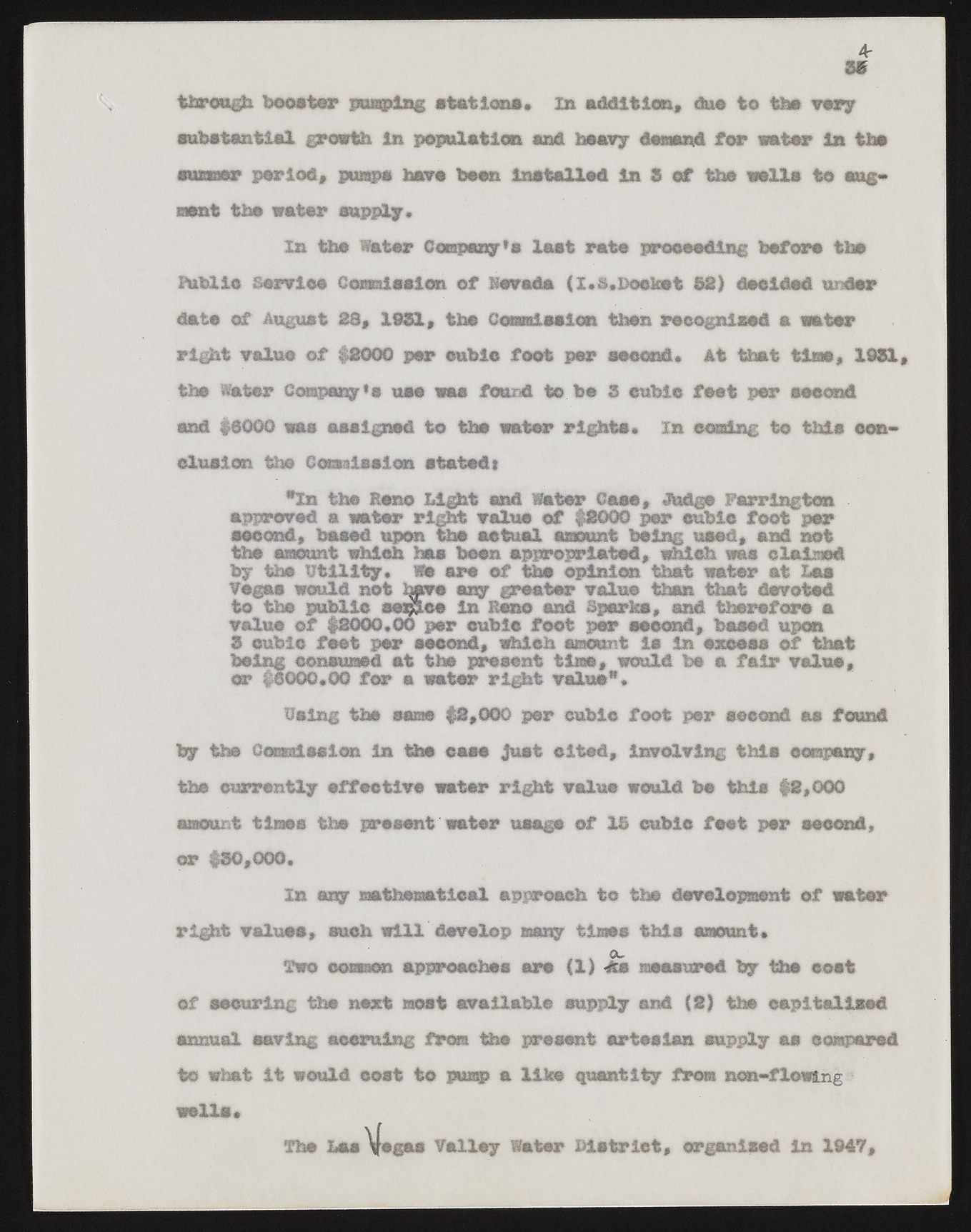Copyright & Fair-use Agreement
UNLV Special Collections provides copies of materials to facilitate private study, scholarship, or research. Material not in the public domain may be used according to fair use of copyrighted materials as defined by copyright law. Please cite us.
Please note that UNLV may not own the copyright to these materials and cannot provide permission to publish or distribute materials when UNLV is not the copyright holder. The user is solely responsible for determining the copyright status of materials and obtaining permission to use material from the copyright holder and for determining whether any permissions relating to any other rights are necessary for the intended use, and for obtaining all required permissions beyond that allowed by fair use.
Read more about our reproduction and use policy.
I agree.Information
Digital ID
Permalink
Details
Member of
More Info
Rights
Digital Provenance
Publisher
Transcription
Ar m through booster pumping station** In addition, in# to ths wy substantial £rawth In population and. heavy demand for water In tbs summer period, pumps have been installed in 3 of the well* to t»g- asnt the water supply. In the later Company*® last rate proceeding before the futile service Comraisaion of Nevada (X.s.Docket 52) decided under date of August SS, 1931, the Coomisalon than recognised a water right value of $2000 per cubic foot per second* at that tine, 1031, the Water Company’s use was found to be 3 cubic feet per second and #6000 was assigned to the water rights* la cooing to this eon- elusion the Commission statedi *In the Reno light end later Case, 4bdge Farrington . approved a water right value of #2000 per cable foot per second, based upon the actual amount being used, and not the amount which has been appropriated, which was claimed by the Utility, m are of the opinion that water at Las Vegas would not have any greater value than that devoted to the public ae^Lce in Eeno and Sparks, and therefore a value of $2000.00 per eubie foot per second, based upon 3 cubic feet per second, which amount is in excess of that being consumed at the present time, would be a fair value, or #6000*00 for a water rl^tt value*. Using the same #2,000 per cubic foot per second as found by the Conalssloa in the case Just cited, involving this company, the currently effective water right value would be this $2,000 amount times the present'water usage of 15 cubic feet per second, or #30,000. In any nrnthematical approach to the development of water right values, such will develop many times this amount* ®wo common approaches are (1) 4m measured by the cost of securing the next most available supply and (2) the capitalised annual waving accruing from the present artesian supply as compared to what it would cost to pump a like quantity from nen-flowing ? wells* The has \f® gas Valley Water District, organised in 1947,

